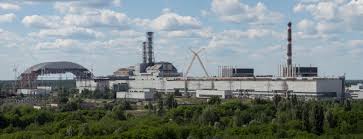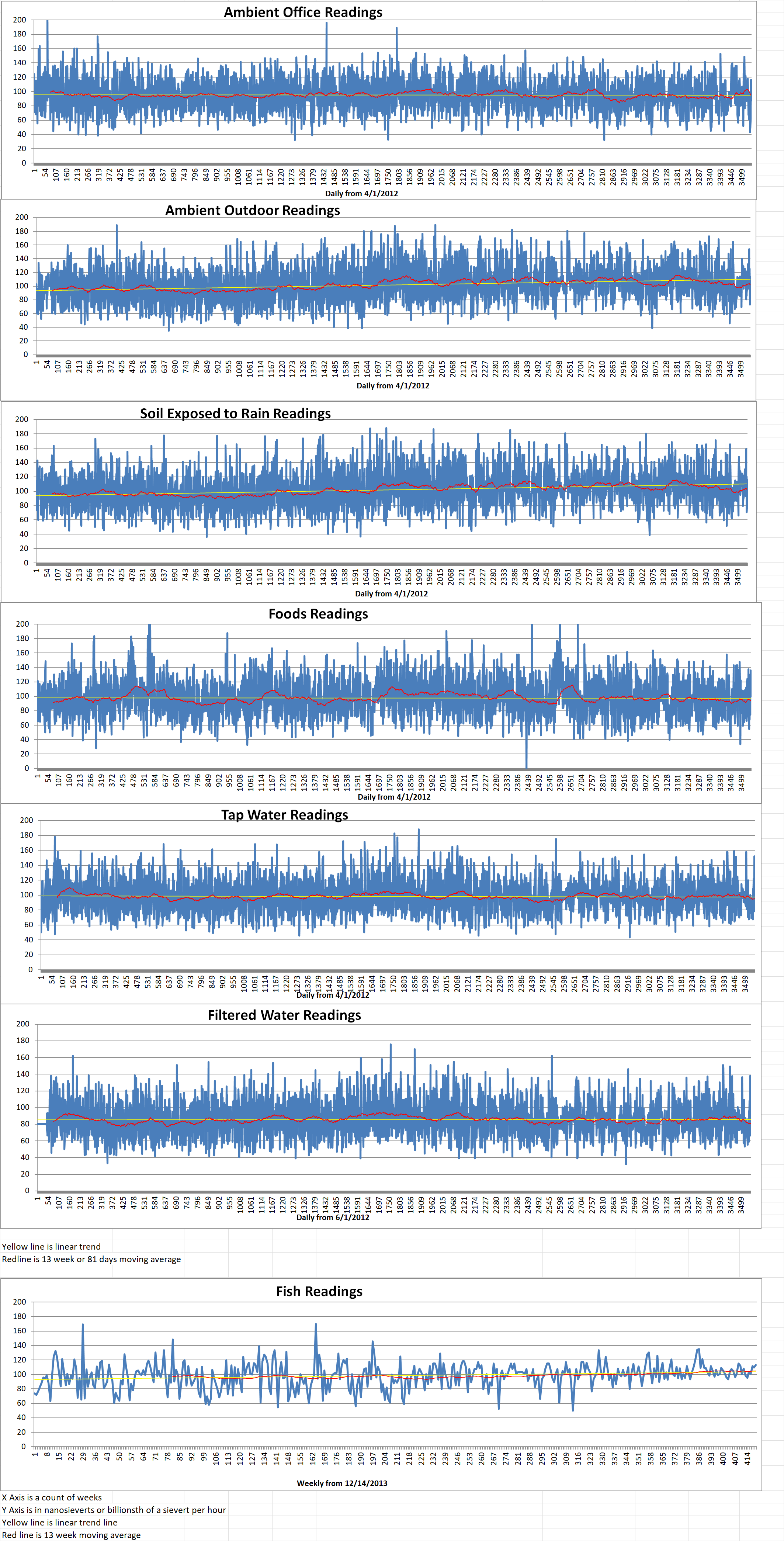Part 2 of 2 Parts (Please read Part 1 first)
Allison Macfarlane is a former chair of the U.S. Nuclear Regulatory Commission. She said that the history of nuclear regulation in the U.S. shows the great importance of having highly trained staff committed to ensuring system safety around the clock. She added, “You want nuclear plant operators to be at their best — not tired, not distracted. If they are worried about their families, or in Chernobyl’s case, not allowed to leave and reduced to eating dried porridge and canned food, they may miss things and make mistakes.”
Over the years, the NRC inspection and investigation reports have mentioned a limited number of examples of operator mistakes that jeopardized or undermined operation of safety systems that could be called on in emergencies. While the NRC found that nearly all of the ninety-three operating U.S. reactors met commission safety and security requirements in 2021, two did not. The findings were based on thousands of inspection hours by the NRC.
The two nuclear power plants that failed to meet NRC requirements were Callaway in Missouri and Davis-Besse in Ohio. They were cited for “low safety significance” but the NRC said that their performance called for special inspections to assure that corrective actions are taken to prevent recurrence. Macfarlane currently directs the School of Public Policy and Global Affairs at the University of British Columbia. She said, “These plants are really complex. Safety culture [at U.S. nuclear plants] is regulated because we’ve deemed it really important.” She went on to say that the NRC policy requires not only adherence to rules and regulations but also management’s care to instill a commitment to safety. She added that “If you don’t have it, you will potentially have issues that could lead to major problems, a major accident.”
NRC case files report incidents like one in 2008 when two divers cleaning sludge from an underwater opening to water pumps at the Nine Mile Point plant in upstate New York lost control of a suction hose. This allowed it to be sucked into a pump which was fouled. The NRC said that there was no threat to operations. However, the NRC found “significant weaknesses” in the operator’s response to the incident.
The operators failed to require a rigorous planning process even though the underwater clearing operation had never been done before. Contrary to expected best practice, the divers did not immediately halt work when the incident occurred.
A senior official of the then-plant owner, Constellation Energy Nuclear Group, admitted to the NRC officials, “[We] had missed some things we shouldn’t have missed. … We had tunnel vision to some degree. The fact we didn’t go into is why the event occurred.”
Edwin Lyman is the director of nuclear power safety with the Union of Concerned Scientists. He emphasized in a recent blog post that maintaining the integrity of the water pumps and other vital safety systems is essential to reactor safety and security. Lyman said that is a reactor cooling system fails, nuclear fuel rods can begin releasing radiation within hours.
Lyman said, “There are a number of events that could trigger a worst-case scenario involving a reactor core or spent fuel pool located in a war zone.” These include an accidental of intentional strike that could directly damage reactors. He added that,”extended loss of power that interrupted cooling system operations that personnel could not contain has the potential to cause a Fukushima-like disaster.”
Yesterday, Ukraine made a long-planned move to cut connection to the Russian electrical grid. They then connected to the continental European grid via Moldavia.
Kadri Simson is the European Union energy commissioner. She said that “This will help Ukraine to keep their electricity system stable, homes warm and lights on during these dark times,” Kadri Simson, the European Union energy commissioner, said in a statement. “It is also a historic milestone for the EU-Ukraine relationship — in this area, Ukraine is now part of Europe.”
Blog
-

Nuclear Reactors 1011 – Concerns Grow Over Russian Occupation Of Ukrainian Nuclear Facilities – Part 2 of 2 Parts
-
Nuclear News Roundup Mar 16, 2022
61 more employees being let go from Duane Arnold nuclear plant thegazette.com
Kentucky Senate committee approves measure seeking research on nuclear energy wtvq.com
How will SA be affected if a nuclear war broke out in Europe? This simulation thinks it has the answer timeslive.co.za
Pope Evokes Spectre of Nuclear War Wiping Out Humanity usnews.com
-

Geiger Readings for Mar 16, 2022
Ambient office = 92 nanosieverts per hour
Ambient outside = 104 nanosieverts per hour
Soil exposed to rain water = 104 nanosieverts per hour
English cucumbers from Central Market = 108 nanosieverts per hour
Tap water = 79 nanosieverts per hour
Filter water = 67 nanosieverts per hour
-

Nuclear Reactors 1010 – Concerns Grow Over Russian Occupation Of Ukrainian Nuclear Facilities – Part 1 of 2 Parts
Part 1 of 2 Parts
I have been monitoring the Russian occupation of the Chernobyl and Zaporizhzhia nuclear power plants in Ukraine during the Russian invasion. Since the situation is rapidly evolving, I decided I needed to revisit the subject.
For the first time in the sixty-six-year history of commercial nuclear power, operators must manage the exacting safety systems of a massive nuclear power plant under the guns of an occupying army that is bombarding civilian targets. The stress on the staff of Ukraine’s shuttered Chernobyl nuclear facility and the operating Zaporizhzhia nuclear power plant, both of which are under Russian control is a serious, growing issue according to the head of the International Atomic Energy Agency (IAEA) in Vienna. IAEA director General Rafael Mariano Grossi said, “I remain gravely concerned about the extremely difficult circumstances for the Ukrainian staff there.” The IAEA is currently receiving status reports from Ukraine’s nuclear regulator which is continuing to operate three of Ukraine’s four functioning nuclear power plants.
Two of the six reactors at the Zaporizhzhia plant were operating yesterday. They are under the direction of Russian operatives which includes representatives of Rosatom State Nuclear Energy Corporation (RSNEC) .
The operators of Zaporizhzhia nuclear power plant faced new challenges when the plant lost access yesterday to a third high-voltage line connecting the plant to the Ukrainian power grid. The nuclear plant has four high-voltage lines and a backup line. Two of the connections were damaged earlier in the Russian attack. One line and a backup remain connected, and the safety of the power plant is not threatened according to the IAEA. However, the plant had to reduce power production to adjust to the power line outages. If all electrical power is lost, vital reactor cooling processes will depend on emergency diesel generators which have limited fuel.
In the case of Chernobyl, two hundred and eleven technicians and guards are virtual prisoners inside the plant. They are working without relief “under enormous stress without the necessary rest,” says the IAEA. The Chernobyl plant was destroyed by an explosion in 1986 and is now encased in a steel dome as staff work to dismantle it and safeguard its spent nuclear fuel.
Grossi said that in order to assure the safety of the occupied plants, the “operating staff must be able to [fulfill] their safety and security duties and have the capacity to make decisions free of undue pressure.”
A report this week in the Wall Street Journal based on text messages exchanged with Chernobyl’s Ukrainian staff and other accounts describe a tense “hostage” situation that has deteriorated since the Russian troops took over the plant on Feb 24th. The article reported that workers during brief phone calls, told members of their families about headaches, dizziness, and extreme fatigue.
Adam Stein is an associate director for nuclear innovation at the Breakthrough Institute, which advocates for nuclear power. He said, “I am very concerned about the operators’ health and well-being. I consider that to be the primary risk at these plants at the moment. Due to undue stress and poor working conditions, the operators are definitely not able to perform their functions as well as normal. What happens if reactor operators decide they are not going to work because of the conditions at the plant? That’s speculative, but it’s a concern.” He also mentioned that there are concerns about workers’ ability to maintain facilities and make repairs.
Please read Part 2 next -
Nuclear News Roundup Mar 15, 2022
Anonymous hacks Russian firm running Ukrainian nuclear plant jpost.com
UK repatriates Australian nuclear waste world-nuclear-news.org
Certainty of demand key to HALEU supply, says Orano world-nuclear-news.org
Early site work to begin for Canadian SMR world-nuclear-news.org
-

Geiger Readings for Mar 15, 2022
Ambient office = 88 nanosieverts per hour
Ambient outside = 114 nanosieverts per hour
Soil exposed to rain water = 116 nanosieverts per hour
Blueberry from Central Market = 105 nanosieverts per hour
Tap water = 104 nanosieverts per hour
Filter water = 93 nanosieverts per hour
-

Radioactive Waste 846 – General Accounting Office Publishes A Report Critical Of Work At Waste Isolation Pilot Plant
The Waste Isolation Pilot Plant (WIPP) is located in southern New Mexico. It is the only underground nuclear waste repository in the U.S. It is intended primarily for waste generated in research and construction of nuclear weapons. The U.S. General Accounting Office just issued a report that the U.S. Energy Department is not required to develop a corrective action plan for addressing the root causes of the challenges at the WIPP. The report states that there is no way of knowing if cost increases and missed construction deadlines will continue at the WIPP.
A multimillion-dollar project is underway at the WIPP to install a new ventilations system. When completed, full operations can resume. After a release of radioactive materials in 2014, the WIPP was closed for three years. Then operations were throttled back because parts of the facility were still contaminated, and airflow was reduced.
Federal officials have claimed that the construction project will ensure that the WIPP can meet the Energy Department’s need to dispose of tons of Cold War-era waste left behind by decades of bomb making and nuclear research. However, the GAO report stated that the Energy Department faces construction and regulatory risks that might delay its schedule.
According to Energy Department documents, the ventilation project was estimated to cost about half a billon dollars. This is seventy percent over the original estimate. The project is also about three years behind schedule. The new estimation for the completion date is January 2026. The Energy Department had blamed significant cost overruns on the inexperience of the contractor and problem attracting workers to the area which is an expansive desert that is also home to one of the most productive oil fields in the world.
While some corrective measures were taken, Energy Department officials told the GAO that they have not updated an internal system that is meant to track risks and mitigation measures. Without regular updates from the internal system, Energy Department officials may not be able to meet their disposal schedule. This could result in shipping delays and cost increases for the sites that are generating the waste.
The report repeated that the WIPP is running out of space for waste and that the Energy Department has a large amount of “transuranic waste.” This typically consists of lab coats, rubber gloves, tools and debris contaminated with plutonium and other radioactive elements from sites around the country that are still waiting for disposal.
The WIPP was excavated out of an ancient salt formation about half-mile below the surface. The facility was constructed with the understanding that the shifting salt around the depository would eventually entomb the radioactive waste.
The current layout includes eight large rooms known as panels. The Energy department estimates that these will be filled by 2025. There are plans to excavate two new panels in the near future. The report noted that it is unclear whether the new space will be ready in time to prevent an interruption of disposal operations.
New Mexico regulators have yet to approve permit changes and other requests from the Energy Department. It is not clear how long this will take.
Responding to the GAO report, Energy Department officials agreed with the recommendations aimed at addressing the root causes of the cost increases and construction delays to ensure that “that DOE projects benefit taxpayers while reducing the risk to human health and the environment.”
Nuclear watchdog groups have been very critical of the Energy Department. They have voiced concerns about the future of the WIPP. They cite the increase in defense-related waste that will need to be disposed of when production of key components for the country’s nuclear arsenal ramps up at the Los Alamos National Laboratory in New Mexico and the Savannah River Site in South Carolina. -
Nuclear News Roundup Mar 14, 2022
Britain’s nuclear bunkers exposed – 258 havens primed across UK if Russia war escalates express.co.uk
Russia says it has received US guarantees over Iran nuclear deal Aljazeera.com
Efforts continue to restore power to Chernobyl world-nuclear-news.org
State Dept says Iran nuclear deal will not be an ‘escape hatch’ for Russian sanctions foxnews.com
-

Geiger Readings for Mar 14, 2022
Ambient office = 116 nanosieverts per hour
Ambient outside = 77 nanosieverts per hour
Soil exposed to rain water = 79 nanosieverts per hour
Avocado from Central Market = 99 nanosieverts per hour
Tap water = 80 nanosieverts per hour
Filter water = 73 nanosieverts per hour
-
Nuclear News Roundup Mar 13, 2022
Rolls-Royce SMR design accepted for review world-nuclear-news.org
France sees new nuclear reactors going online by 2035-37 reuters.com
US programme supports Ghana nuclear progress world-nuclear-news.org
Nuclear waste shipment touches down safely in Australia abc.net.au
